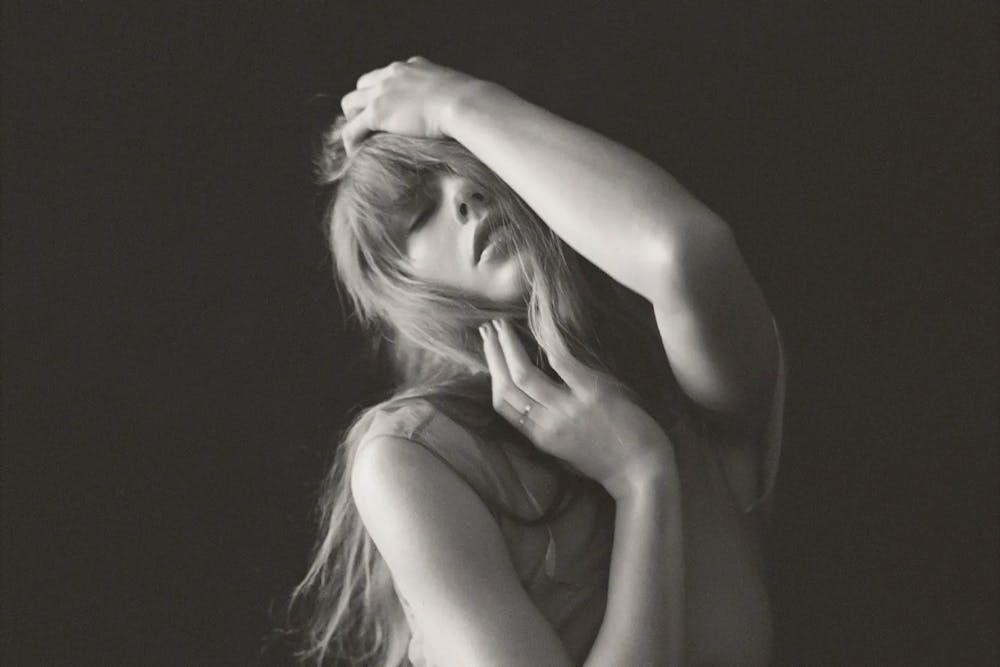Pop singer Taylor Swift released the re-recording of her hit 2014 album “1989” on Oct. 27. This is the fourth re-recording on her journey to reclaim ownership of her first six albums, which became necessary after her previous record label, Big Machine Record, kept the legal rights over the music she made when signed with them.
As with her previous three re-recordings, “1989 (Taylor’s Version)” begins with the 16 songs originally on “1989 (Deluxe Edition)” and ends with five new tracks that Swift had written but not released alongside the original album. While the album “1989 (Taylor’s Version)” was released at midnight EST, she released a deluxe edition with “Bad Blood (feat. Kendrick Lamar) (Taylor’s Version)” a mere seven hours later.
Right off the bat, “Welcome To New York (Taylor’s Version)” transports listeners back to 2014, with the synths and claps sounding identical to the original track. The production of each song has remained consistent throughout the re-recordings, though avid fans may notice a crisper touch in comparison to the original versions. In particular, the synths have a faint echo that was not present in the original album, which can be seen in “Shake It Off (Taylor’s Version),” and the background vocals in some tracks have become louder, which can be seen in “Blank Space (Taylor’s Version).”
Nevertheless, Swift’s vocals are refreshingly new, particularly with more emotional tracks such as “I Wish You Would” and “Clean.” In “I Wish You Would (Taylor’s Version),” Swift’s voice has a tinge of sadness and desperation, delivering the lyrics with far more vulnerability than the original “I Wish You Would,” adding additional depth to the track and allowing its lyrical message to become clearer. Contrastingly, Swift’s mature vocals in “Clean (Taylor’s Version)” establishes the song’s tone as reminiscent, straying from the sadness in the original version.
Yet the vault tracks are what differentiate the album from the original release, and ultimately allow it to shine. The production ranges from metallic chimes and angelic synths in “Slut! (Taylor’s Version) (From the Vault)” to the rapid meter and electronic synths in “Suburban Legends (Taylor’s Version) (From The Vault),” covering a broad base of emotions, particularly in regards to romantic entanglements.
However, while tracks like “Now That We Don’t Talk (Taylor’s Version) (From The Vault)” and “Suburban Legends (Taylor’s Version) (From The Vault)” stand out due to their stellar lyricism, others fall short. In particular, the lyricism during the pre-chorus of “Slut! (Taylor’s Version) (From The Vault)” is very simplistic, incorporating the repetition of “love” in different deviations and contexts. This is overlaid with tacky electronic synths, which distracts from Swift’s emotional vocal delivery.
The tacky synths are not isolated to “Slut! (Taylor’s Version) (From The Vault),” with the album’s overall usage of an EDM dubstep being blatantly unjustifiable. While this is reflective of the trends in 2014’s trending music — and hence works perfectly in the re-recorded tracks — the dubstep casts a negative light on the vault tracks, making them sound corny and unsophisticated.
As a project, “1989 (Taylor’s Version)” was far from disappointing. Swift perfectly emulates the original tracks with this re-record, and the vault tracks serve as time capsules from one of her most popular eras. However, the production and lyricism were simply unforgivable in certain songs, decreasing the album’s likability as a whole. For those who prefer her later or earlier albums, this re-record may be underwhelming. On the other hand, for those who liked the “1989” era, “1989 (Taylor’s Version)” is the perfect addition to Swift’s discography.
3.5/5











